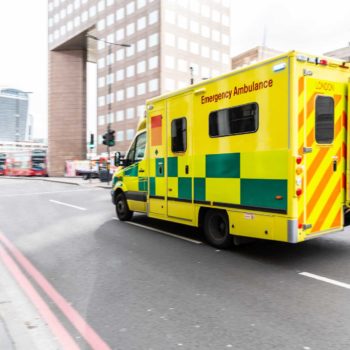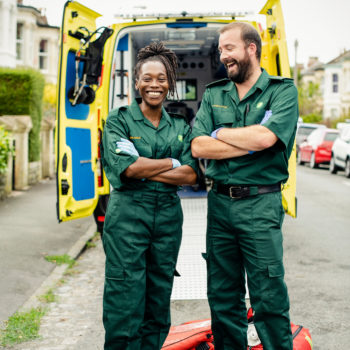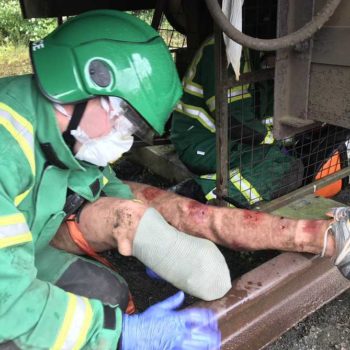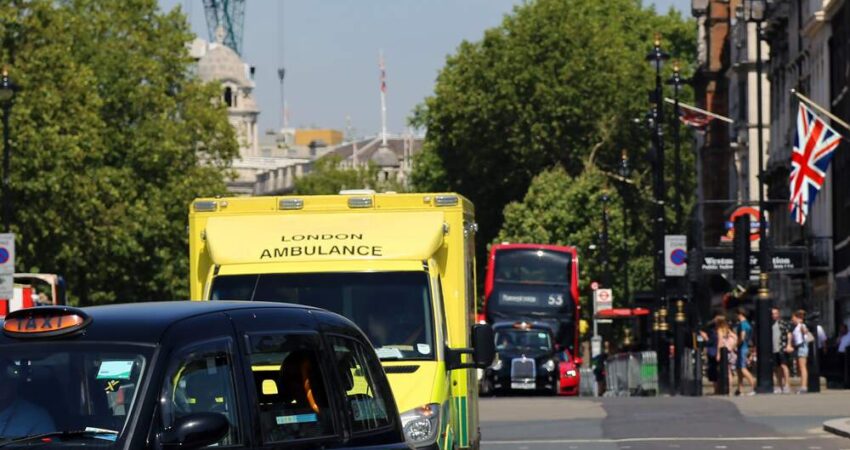
The history of the UK Paramedic
The role of a Paramedic is a fascinating one, and has come a long way since its’ original inception. In this article, we quickly explore some of the milestones and developments that this profession has come through:
Please sign in on the left or register as a new user.
Register
Paramedics in the UK
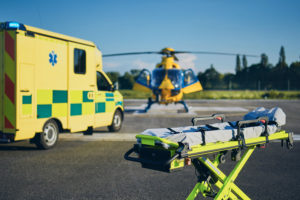 The first UK ‘paramedic’ came about in 1971 where under the work of Dr Chamberlain, a group of ambulance workers were trained with additional skills, knowledge, and equipment to deal with patients presenting with cardiac complaints. With knowledge of this initiative in Brighton, other initiatives began to form across the UK with pioneering doctors taking ambulance workers under their guidance, furthering their skills in particular areas of healthcare. In 1973 with the NHS Reorganisation Act, all Ambulance Services across the UK were transferred from local authority control to the NHS, including at the time experimental ‘Paramedic’ schemes. Following the transition of Ambulance Service power, the NHS began discussions on the merit of the Paramedic, or known at the time as ‘Extended trained ambulance staff’.
The first UK ‘paramedic’ came about in 1971 where under the work of Dr Chamberlain, a group of ambulance workers were trained with additional skills, knowledge, and equipment to deal with patients presenting with cardiac complaints. With knowledge of this initiative in Brighton, other initiatives began to form across the UK with pioneering doctors taking ambulance workers under their guidance, furthering their skills in particular areas of healthcare. In 1973 with the NHS Reorganisation Act, all Ambulance Services across the UK were transferred from local authority control to the NHS, including at the time experimental ‘Paramedic’ schemes. Following the transition of Ambulance Service power, the NHS began discussions on the merit of the Paramedic, or known at the time as ‘Extended trained ambulance staff’.
In 1979, Dr Lucas of the Medical Commission on Accident Prevention considered the possible potential of the Paramedic as he felt it was logical to train them in advanced resuscitation techniques as they were first to the scene. He felt they could benefit the patient before their arrival to hospital, and this could play a part in the overall treatment of that person. The Department of Health (DoH) commissioned an analysis into the benefits of the Paramedic role and training on the overall NHS treatment of a patient. In 1984 the University of York published their findings of the analysis, and the results were found to be highly positive and compelling.
With this published article, acceptance of the need for higher trained ambulance crews grew. In 1985 the DoH established a UK wide pilot scheme, and under the leadership of Roland Furber, it was adopted by all UK ambulance services. The scheme brought together the many experimental Paramedic groups, creating a standardised package of training taught by regional ambulance training schools and involving local hospitals.
From the national ambulance dispute of 1989-1990 it became clear that there was a need for more paramedic training schemes, and recognition of formal payment for the extended scope of practice. Following this in the early 90’s, the first collaborations were created between Universities and Ambulance Services for the creation of degree schemes in Paramedic Science.
In 1999 the paramedic profession was registered with the Council of Professionals Supplementary to Medicine, shortly succeeded by the Healthcare Professions Council. The Paramedic profession was the 12th group of health workers to become registered Allied Health Professionals (AHP). This was an important step in the Paramedic role as it created a need for it to be further professionalised, increasing the minimum standard of education and training required to be classed as a Paramedic.
The 2000’s onward…
In 2000 the British Paramedic Association was established as a professional body for Paramedics, and it began collaborative work in developing reference points which enabled the profession to move forward in its development. Also in the same year the Joint Royal Colleges Ambulance Liaison Committee (JRCALC) with the now Professor Chamberlain developed the Practitioner in Emergency Care (PEC) role. This came about as the realisation that ambulance service demands were changing to more primary and non-emergency healthcare, rather than the original hyper-acute emergency care. The PEC was intended to upskill the Paramedic workforce, and support the modernisation efforts of the ambulance services, helping them become more of a mobile healthcare service. The PEC were to have further development in patient assessment, history taking, clinical decision making, and advanced pharmacology.
In 2003 the government published their ten key roles for AHP’s. This document widened the roles and responsibilities of practicing paramedics to meet the developing patients needs. In 2005 the DoH published an article that further supported the need for the advancing roles of Paramedics, and now there are a number of titles for Paramedic enhancement and extra training to continue to meet the more primary and non-urgent practice required by patients.
As time has continued, and through the initiatives and progress made by many organisations, such as the College of Paramedics, many more developments have been attained for the Paramedic role. Universities now offer full 3-year degree courses, helping further the recognition of the professional and academic grounding of the role. New Paramedic specialities have become available, allowing Paramedics to specialise and develop their careers, from Advanced Paramedic Practitioners, Critical Care Paramedics, Research Paramedics, and more.
The role continues to be developed, with numerous projects and advancements in the works. And as of July 2022, the first International Paramedics Day was held in recognition of the role. The future continues to be an exciting prospect for the Paramedic profession.


